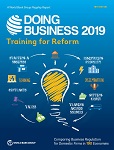
Trading Across Borders: Training for trade facilitation
In today’s globalized and highly digitalized trading environment, the ability of trade professionals to benefit from electronic systems largely depends on training and communication. In recent years, Doing Business has captured reforms that highlight the fundamental role played by education, training and communication in trade facilitation.

Trading Across Borders: Technology gains in trade facilitation
The Doing Business trading across borders indicator measures technological advancement in the area of trade facilitation by collecting data on the time and cost of customs clearance and inspections procedures. For the first time this year, the indicator collects data on the use and advancement of single windows around the world.

Trading Across Borders: Technology gains in trade facilitation
The Doing Business trading across borders indicator measures technological advancement in the area of trade facilitation by collecting data on the time and cost of customs clearance and inspections procedures. For the first time this year, the indicator collects data on the use and advancement of single windows around the world.

Measuring trade facilitation step by step: findings from a sample of 10 economies
In 2014 the Doing Business project’s Trading across Borders team took on additional research aimed at providing new data to complement existing tools for benchmarking in trade facilitation. The study applied a time-and-motion approach to map out the step-by-step procedures in trade. The research focused on 10 economies: Bangladesh, Benin, China, the Czech Republic, Honduras, the Republic of Korea, Moldova, Qatar, St. Lucia and Zambia.
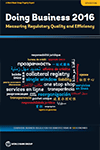
Trading across borders: A new approach to measuring trade processes
This year’s report introduces important changes in the methodology for the indicators, which are aimed at increasing the economic and policy relevance of the indicators. Under the new methodology, Doing Business measures the time and cost for three sets of procedures needed for exporting and importing: documentary compliance, border compliance and domestic transport. For the first time this year, Doing Business considers the product of comparative advantage for each economy when measuring export procedures, while for import procedures it focuses on a single, very common manufactured product (auto parts).

Implementing trade single windows in Singapore, Colombia and Azerbaijan
An economy’s competitiveness is driven by many factors, including how quickly, reliably and cost-effectively the private sector can trade goods. Today’s manufacturers and agricultural producers operate in a global supply chain. Thus an efficient international trade system can increase economic opportunities and improve livelihoods—especially in poor economies with small domestic markets.

Rwanda: Fostering prosperity by promoting entrepreneurship
Since 2004 Rwanda has substantially improved access to credit, streamlined procedures for starting a business, reduced the time to register property, simplified cross-border trade and made courts more accessible for resolving commercial disputes.

Latvia: Maintaining a reform state of mind
Despite being substantially affected by the financial crisis starting in 2008, Latvia continued its reform agenda, adapting it to the new challenges the country was facing. Learn what lessons can be learned about this “reform state of mind” demonstrated by Latvia.

APEC: Sharing goals and experience
The APEC Ease of Doing Business action plan identifies “champion economies” to share information and experience and to assist other members through tailored diagnostic studies. The plan seeks to implement APEC’s view of capacity building as a central part in enhancing cooperation and accelerating progress.

Colombia: Sustaining reforms over time
Colombia’s commitment to regulatory reform has led to substantial improvements in the quality of the business environment and a more solid foundation for private sector development. While the country has more development hurdles to overcome, the measures taken over the past years have greatly improved its competitiveness.
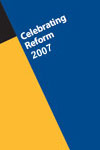
Pakistan: Speeding up trade
Trading across borders is now easier in Pakistan, thanks to its recent reforms in which reformers learned from past mistakes. In 2003, the reform strategy was to implement the short-term, less costly, quick-win reforms immediately while preparing the ground for the medium to long-term reforms, which were perhaps more complex and costly. This strategy paid off.
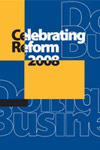
Jordan: A public-private partnership brings order to Aqaba’s port
The port of Aqaba, Jordan’s only sea port, was the country’s biggest hindrance to trade in mid-2003. Waiting times for ships at berth were long, and congestion at the container terminal severe. Major international shipping lines suspended their dealings with the Aqaba Container Terminal. But by the end of 2005 the congestion had disappeared, and the congestion charge was gone—thanks to reforms.
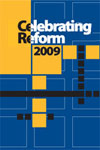
Serbia: Cross-border trading reforms in post-war Serbia
Serbia has made much progress in streamlining its customs procedures to be in line with EU practices, developing an electronic customs clearance system, and modernizing its cargo risk management system. This case study shows how Serbia reformed its trade practices.

Madagascar: Trade reform gives country a competitive edge
Madagascar’s trade reform strongly emphasized the role of the private sector in spurring economic growth. As part of this program, Madagascar reformed its trade policies and procedures, and the results have been impressive. This case study follows the process.

Korea: Better business regulation and improved competitiveness
In Korea the Presidential Council on National Competitiveness, created in 2008, identified regulatory reform as 1 of 4 pillars to improve the economy’s competitiveness, along with public sector innovation, investment promotion, and legal and institutional advancement. Reviewing Korea’s business regulations, the council found that 15% had not been revised since 1998. The council applied sunset clauses to more than 600 regulations and 3,500 administrative rules.
